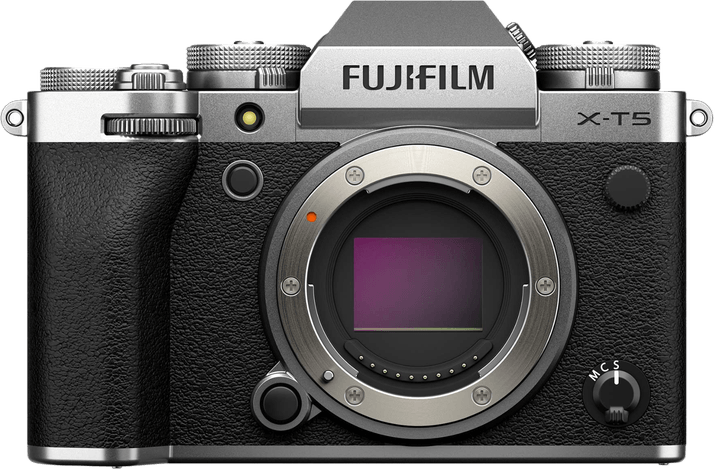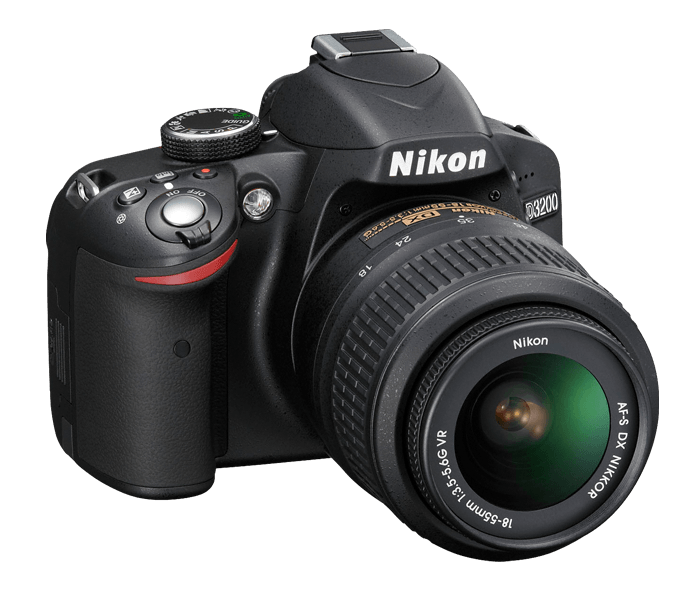Fujifilm X-T5 vs Nikon D3200 Comparison
Fujifilm X-T5

Nikon D3200

The Fujifilm X-T5 outperforms the Nikon D3200 with a significant difference in scores, 81/100 and 54/100 respectively. Both cameras share similarities in their dimensions, with the X-T5 measuring 130 x 91 x 64mm and the D3200 at 125 x 96 x 77mm. They also have comparable weights, with the X-T5 at 557g and the D3200 at 505g.
The X-T5, a mirrorless camera, excels with its modern features, as it was released in 2022 with a launch price of $1699. On the other hand, the D3200 is a DSLR camera that was introduced in 2012 at a lower price of $699, making it more affordable.
Despite its higher price, the Fujifilm X-T5’s advanced technology and superior performance justify its cost. The Nikon D3200, while less expensive, offers decent quality for its age but falls short when compared to the X-T5. Ultimately, the Fujifilm X-T5 is the clear winner in this comparison due to its higher score and modern capabilities.
Fujifilm X-T5 vs Nikon D3200 Overview and Optics
The Fujifilm X-T5 outperforms the Nikon D3200 in optics, scoring 81/100 compared to the Nikon’s 63/100. Both cameras share several specifications, such as having a CMOS sensor, an APS-C sensor size, and a similar lens mount, with Fujifilm X for the X-T5 and Nikon F DX for the D3200. However, the Fujifilm X-T5 takes the lead in several aspects.
The X-T5 boasts an impressive 40-megapixel resolution, significantly higher than the D3200’s 24.2 megapixels. This difference allows the X-T5 to capture more detail and produce higher quality images. Additionally, the X-T5 has a faster shooting speed of 15 frames per second, compared to the D3200’s 4 frames per second, making it more suitable for capturing fast-moving subjects or continuous shooting.
Another advantage of the Fujifilm X-T5 is its X-Processor 5, which is more advanced than the Nikon D3200’s Expeed 3 processor. This results in faster processing and better overall performance. Furthermore, the X-T5 has built-in image stabilization, a feature lacking in the D3200, which helps reduce camera shake and produce sharper images.
The Nikon D3200 does have a higher DXOMARK score of 81 for its sensor, but this advantage is negated by the fact that DXOMARK does not score Fujifilm cameras, making it impossible to directly compare the two in this aspect.
In terms of optics, the Fujifilm X-T5 is the clear winner with its higher megapixel count, faster shooting speed, more advanced processor, and image stabilization. While the Nikon D3200 does have a higher DXOMARK score, it falls short in other important aspects, making the X-T5 a better choice for those prioritizing camera optics.
Fujifilm X-T5 vs Nikon D3200 Video Performance
The Fujifilm X-T5 outperforms the Nikon D3200 in video capabilities, with a score of 87/100 compared to the Nikon’s 43/100. Both cameras share some common video specifications, but the Fujifilm X-T5 boasts superior features that contribute to its higher score.
The Fujifilm X-T5 and Nikon D3200 both offer video recording capabilities. However, the X-T5 has a maximum video resolution of 6K (6240×4160) and a frame rate of 60fps, delivering a much higher quality video output than the D3200’s Full HD (1920×1080) resolution and 30fps frame rate. This significant difference in resolution and frame rate allows the X-T5 to capture more detail and smoother motion in videos.
Furthermore, the Fujifilm X-T5 has built-in time-lapse functionality, a feature that the Nikon D3200 lacks. This allows the X-T5 to create captivating time-lapse videos without the need for additional software or hardware.
While the Nikon D3200’s video capabilities are inferior to the Fujifilm X-T5, it still offers Full HD video recording, which is sufficient for casual users and those who do not require the higher resolution and frame rate provided by the X-T5. However, the lack of time-lapse functionality may be a drawback for some users.
Considering these points, the Fujifilm X-T5 is the clear winner in terms of video capabilities, offering higher resolution, faster frame rates, and built-in time-lapse functionality. The Nikon D3200, while serviceable for casual users, falls short in comparison to the X-T5’s superior features.
Fujifilm X-T5 vs Nikon D3200 Features and Benefits
The Fujifilm X-T5 outperforms the Nikon D3200 with a feature score of 85/100, compared to the latter’s 41/100. Both cameras share similarities in having a 3-inch screen size and lacking GPS capabilities. However, the Fujifilm X-T5 surpasses the Nikon D3200 in various aspects, making it the superior choice.
The Fujifilm X-T5 boasts a higher screen resolution of 1,840,000 dots, while the Nikon D3200 only has 921,000 dots. This difference allows the X-T5 to display sharper and clearer images on its screen. Additionally, the X-T5 features a touchscreen, making it more user-friendly and allowing for easier navigation. The Nikon D3200 lacks this feature.
Another advantage of the Fujifilm X-T5 is its flip screen, which enhances flexibility when composing shots from different angles. The Nikon D3200 does not have a flip screen, limiting its usability in certain situations. Furthermore, the Fujifilm X-T5 is equipped with both Wi-Fi and Bluetooth capabilities, enabling seamless connectivity with other devices. The Nikon D3200 does not support Wi-Fi or Bluetooth, restricting its compatibility and convenience.
Although the Nikon D3200 falls short in comparison to the Fujifilm X-T5, it still functions as a reliable camera. However, the X-T5’s superior features make it the clear winner in this comparison. Its higher screen resolution, touchscreen, flip screen, and connectivity options contribute to its overall enhanced performance and user experience.
Fujifilm X-T5 vs Nikon D3200 Storage and Battery
The Fujifilm X-T5 outperforms the Nikon D3200 in storage and battery with a score of 76/100 compared to 27/100. Both cameras share compatibility with SD, SDHC, and SDXC (UHS-I compatible) memory cards. However, the X-T5 offers two memory card slots, while the D3200 has only one.
The X-T5’s superior battery life of 580 shots surpasses the D3200’s 540 shots. Additionally, the X-T5 uses the NP-W235 battery type and provides USB charging, while the D3200 relies on the EN-EL14 battery type without USB charging capability.
The Nikon D3200 does not excel in any aspect of storage and battery when compared to the Fujifilm X-T5. The X-T5’s advantages include additional memory card slot, longer battery life, and USB charging, making it a better choice for photographers prioritizing storage and battery performance. The D3200 falls short in these areas, making it less convenient for extended shooting sessions.
Fujifilm X-T5 vs Nikon D3200 – Our Verdict
Are you still undecided about which camera is right for you? Have a look at these popular comparisons that feature the Fujifilm X-T5 or the Nikon D3200:

